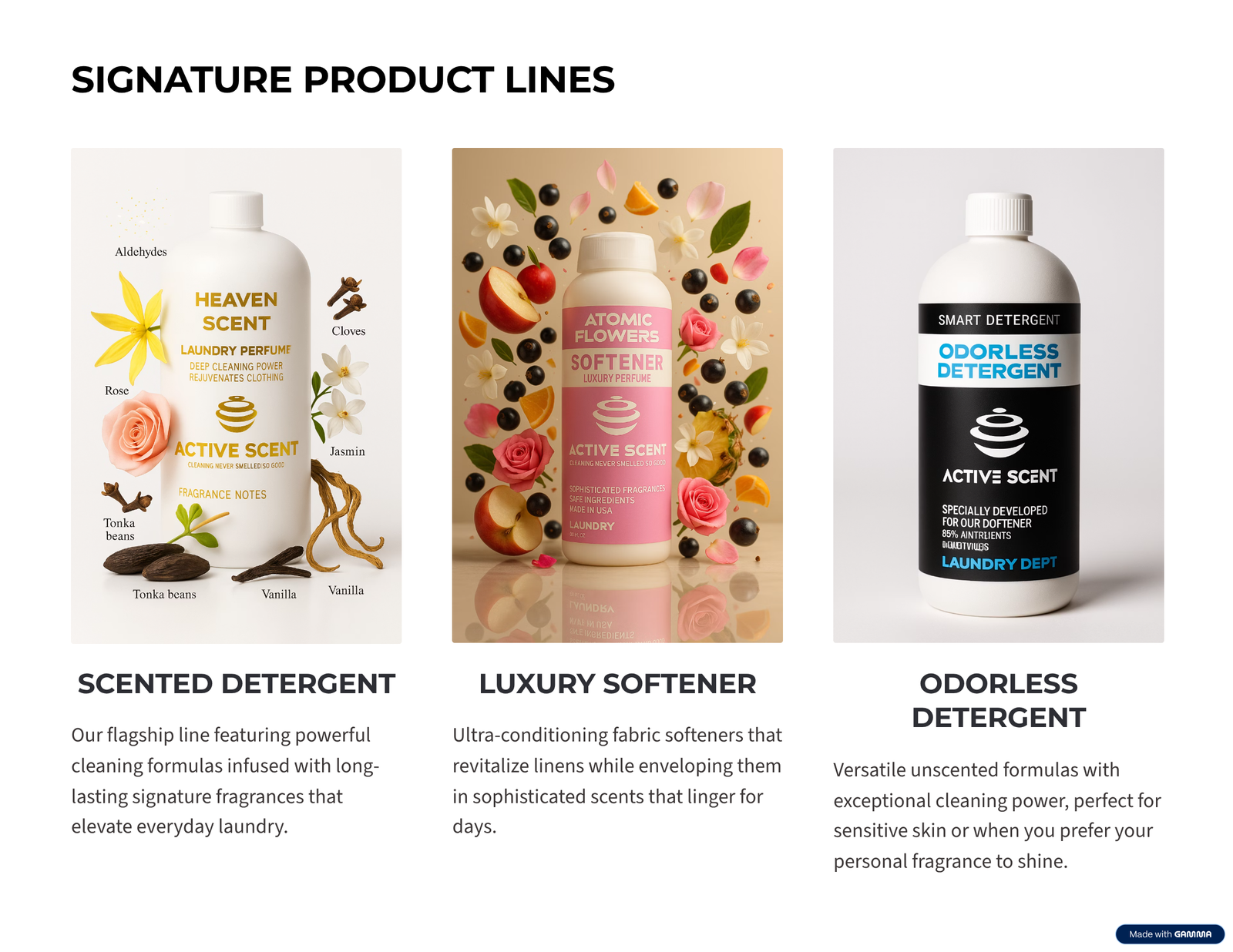
How to Remove Odors from Washing Machine | Easy Tips
Figuring out how to banish those funky washing machine odors is far easier than you might imagine. The secret often lies in a simple yet potent combination: running a hot cleaning cycle with vinegar and baking soda, followed by a thorough wipe-down of the machine's gasket and filter.
These quick fixes disrupt the damp, dark environment where mold, mildew, and bacteria love to party, paving the way for permanently fresh laundry.
Why Your Washing Machine Smells and What to Do Now
That unmistakable musty smell drifting from your laundry room isn't just an annoyance; it's a clear signal that something is off inside your machine. The culprits are usually hiding in plain sight. A washer's warm, damp interior is the perfect breeding ground for mold and mildew, especially inside the rubber door seal on front-load models.
It's not just mold. A slimy biofilm can build up from leftover detergent and fabric softener residue. This gunk traps moisture and grime, creating the perfect meal for odor-causing bacteria. Often, the root of a smelly washer starts with common laundry mistakes, such as using too much detergent.
Identifying the Odor Hotspots
Before you can declare war on the smell, you need to pinpoint its source. From my experience, these are the problem areas that demand your immediate attention:
- The Gasket: This rubber seal is the #1 offender in front-load machines, trapping water, lint, and all sorts of grime.
- The Drum: Residue coats the entire drum, especially if you rely on cold water cycles that don't fully dissolve detergents.
- The Dispenser Drawer: Leftover detergent and softener can turn into a slimy, moldy mess in this often-forgotten compartment.
- The Drain Filter: This little trap catches lint, coins, and other debris. If not cleaned regularly, it creates a stagnant, smelly blockage.
For those who want immediate action, this cheatsheet breaks down the most common issues and their fastest fixes.
Quick Odor Removal Cheatsheet
| Odor Source | Primary Cause | Quick Fix Solution |
|---|---|---|
| Gasket & Seal | Trapped moisture, hair, and soap scum create a breeding ground for mildew. | Wipe down with a 1:1 vinegar and water solution. Dry thoroughly. |
| Drum Interior | Biofilm from undissolved detergent and fabric softener residue. | Run an empty hot cycle with 2 cups of white vinegar, then another with ½ cup of baking soda. |
| Dispenser Drawer | Gummy, moldy buildup from leftover liquids and powders. | Remove the drawer, soak it in hot, soapy water, and scrub clean with a small brush. |
| Drain Filter | A blockage of lint, coins, and other debris causing stagnant water. | Unplug the machine, locate the filter (usually a small front panel), drain the excess water, and clear the trap. |
This table is your go-to for a quick diagnosis and solution, helping you target the problem directly without wasting time.
Your Quick-Win Cleaning Strategy
You don't need an arsenal of harsh chemicals to see immediate results. A simple, two-part approach using kitchen staples can neutralize most common odors and give your machine a total reset.
First, run an empty, hot water cycle with two cups of white vinegar poured directly into the drum. Follow that up with another hot cycle, this time using a half-cup of baking soda. The vinegar will disinfect and break down mineral deposits, while the baking soda neutralizes any lingering odors and scrubs away the last bits of grime.
It's no surprise that people are paying more attention to appliance hygiene. In the United States alone, the washing machine cleaner market was valued at around $153.8 million in 2023 and is expected to keep climbing. This trend shows a clear shift toward wanting cleaner, more hygienic home environments—and that starts with the tools we use every day.
Your Deep Cleaning Guide for a Fresher Washer
Alright, you’ve pinpointed the likely source of that musty smell. Now it’s time to give your machine a complete reset. This isn't about a quick fix; it's a deep-clean ritual to obliterate the biofilm, mold, and hidden residue that are causing the problem in the first place.
Think of it as a spa day for your appliance. We're going to tackle every critical area, leaving no grimy corner untouched. By the end, you'll have a perfectly neutral base, ready to deliver exceptionally clean and fresh laundry.
Cleaning Key Components
Before you even think about running a cleaning cycle, a little hands-on effort will make all the difference. The most stubborn odors love to hide where automated cycles just can't reach.
Your first target should be the detergent dispenser drawer. This little compartment is a magnet for slimy, moldy buildup. Slide the drawer all the way out—most have a small tab you can press down to release it completely. Let it soak in a sink of hot, soapy water for about 20 minutes. Then, grab an old toothbrush and scrub away every last trace of gunk from all the nooks and crannies.
Next, turn your attention to the rubber gasket on your front-load machine’s door. This is, without a doubt, the number one culprit for trapping moisture, lint, and grime. Mix a solution of equal parts white vinegar and water in a spray bottle. Give the entire gasket a thorough spray, gently peeling back the folds to get deep inside. Wipe it all down with a clean cloth until the grime is gone, then dry it completely.
Running the Perfect Cleaning Cycle
With the main hideouts manually cleaned, it's time to sanitize the drum and all the internal plumbing. You’ve got two great options here: a natural approach using household staples or a dedicated commercial washer cleaner. Both work well, so it really just comes down to personal preference.
Natural Method (Vinegar & Baking Soda)
- The Vinegar Run: Pour two full cups of white vinegar straight into the washer drum. Don't put it in the dispenser. Now, run the machine on its hottest, longest cycle. The combination of heat and acidic vinegar is fantastic for dissolving hard water minerals and killing off mold spores.
- The Baking Soda Finish: Once the vinegar cycle is finished, sprinkle a half-cup of baking soda into the drum and run another hot cycle. The baking soda is brilliant for neutralizing any lingering acidic smells the vinegar left behind.
Commercial Cleaner Method
- If you're using a store-bought cleaner, just follow the package directions exactly. Most come in a tablet or powder form. You'll toss it into the empty machine and run a hot cycle. These are packed with powerful enzymes designed to break down detergent residue and biofilm.
Expert Tip: A critical safety note—never, ever mix vinegar and bleach. The combination creates toxic chlorine gas. If you decide to use bleach at any point for sanitizing, make sure you run a full rinse cycle before introducing any other cleaning product.
Final Checks for a Lasting Clean
The last stop on our deep-cleaning tour is the drain pump filter. This little trap, usually behind a small panel on the front of your machine, catches all the lint, stray coins, and other debris that shouldn't go down the drain. Before you open it, place a shallow pan and a towel underneath to catch the water that will inevitably spill out.
Unscrew the filter, pull out all the gunk you find, and give it a good rinse under warm water before putting it back. A clean filter is key to proper drainage, preventing the stagnant water that leads right back to bad smells.
And if you’ve done all this and still suspect a deeper issue, you may need to learn how to unblock a washing machine's waste pipe. This same deep cleaning process is also amazing for fabrics that cling to odors. For those stubborn gym smells, check out our guide on how to get smell out of workout clothes.
Troubleshooting Persistent Washing Machine Smells
So, you’ve run the cleaning cycles. You’ve scrubbed the gasket. But that funky, unmistakable odor just won’t quit. It’s a frustratingly common scenario, and it usually means the real problem is hiding where a standard cleaning routine can’t reach.
When the basic methods fall short, it’s time to dig a little deeper. These stubborn smells often point to blockages or buildup in your machine's drainage system—places that trap stagnant water and create a breeding ground for musty, mildewy odors that can even start to smell like sewage.
Investigating the Drain Pump Filter
Your first move should be to check the drain pump filter. This small but vital part is designed to catch all the debris—lint, coins, hair—before it can create a major clog in your home's plumbing. When it gets overloaded, it basically creates a dam of smelly, stagnant water right at the bottom of your machine.
You’ll usually find the filter behind a small access panel on the bottom front of your washer. Quick tip: grab a shallow pan and a few old towels before you open it, because water will spill out. Slowly unscrew the filter, let the water drain completely, and then pull it out. Clean it thoroughly under warm, running water. You might be shocked by what you find.
Key Insight: A clogged drain pump filter doesn't just cause odors; it makes your machine's pump work overtime, leading to premature wear and tear. Cleaning it every 2-3 months is a simple preventative step that can save you a lot of trouble down the line.
Inspecting the Drain Hose
If the filter is clean but the smell lingers, your next suspect is the drain hose. Over time, a slimy biofilm of soap scum, lint, and bacteria can build up inside the hose. This not only stinks, but it also restricts water flow, creating a perfect storm for recurring odors.
Start with a simple visual check. Make sure the hose isn't sharply kinked or bent behind the machine, which can easily trap water. Then, with the machine unplugged, carefully detach the hose from the wall's standpipe and look for any visible gunk right at the opening. Sometimes just clearing this out is enough to solve the problem.
The Impact of Hard Water
Another hidden culprit is hard water. The high concentration of minerals like calcium and magnesium creates a layer of scale inside your machine’s drum, hoses, and heating element. This limescale is like a magnet for soap scum and bacteria, trapping them and contributing to those persistent smells you can’t get rid of.
This is a massive issue. In fact, the global market for washing machine cleaners was valued at around $1.4 billion in 2023, with a huge focus on products that combat this exact kind of buildup in front-loading machines. Their airtight design is notorious for trapping moisture, making them hotspots for mold when combined with mineral deposits.
While deep cleaning your appliance is key, understanding how to manage household odors in general is always useful. If you're dealing with musty odors in other areas of your home, this guide on how to fix a musty room might offer broader solutions. And once your machine is truly fresh, you can discover how to make your clothes smell fresh with every single wash.
How to Keep Your Washing Machine Smelling Fresh
You’ve done the deep clean. The last thing you want is for that damp, musty smell to make a comeback. The secret to keeping odors gone for good isn’t more cleaning—it’s preventing them from ever starting. This means shifting from a reactive mindset to a proactive one.
Don't worry, this isn't about adding another tedious chore to your list. It’s about making a few small, effortless adjustments to your laundry routine that yield massive results. By creating an environment where mold and mildew simply can’t survive, you ensure your machine remains impeccably fresh, load after load.
Cultivate Odor-Preventing Habits
The real art to a perpetually fresh washing machine is managing moisture. These simple habits, integrated into your post-wash ritual, make all the difference in the world.
-
Leave the Door Ajar: This is the single most powerful habit you can adopt, especially for front-load washers. Cracking the door open allows air to circulate, drying out the drum and gasket. This simple act denies mold the dark, damp playground it craves.
-
Wipe Down the Gasket: After the day’s final load, grab a dry cloth and give the rubber door seal a quick wipe. It takes ten seconds, but it removes the pooled water, lint, and gunk that would otherwise fester.
-
Remove Wet Clothes Immediately: Letting a damp load sit is an open invitation for that mildew scent to take hold—in your clothes and your machine. Moving laundry to the dryer as soon as the cycle ends is non-negotiable for freshness.
Mastering these small steps is the key to figuring out how to make your laundry smell good right out of the wash.
Choose Your Detergent Wisely
The type—and amount—of detergent you use plays a starring role in preventing odor-causing buildup. It’s a common mistake to think more soap means a better clean. The opposite is often true. Excess detergent doesn’t rinse away fully.
Instead, it leaves behind a sticky residue inside the machine. This film becomes a magnet for dirt and bacteria, creating a feast for mold. High-efficiency (HE) machines, which use less water, are especially prone to this problem.
Key Takeaway: Using a powerful, fragrance-free detergent provides the perfect neutral base. Active Scent's odor-free laundry detergent has been carefully formulated for a deep and effective clean, without competing fragrances. It's the ultimate neutral base, created to perfectly complement our range of luxury scented fabric softeners.
Think of your detergent as the canvas. A clean-rinsing, powerful formula ensures no residue is left behind to cause trouble down the line. It prepares your fabrics perfectly, allowing you to layer on the luxurious, unforgettable fragrances that define your style—from deep, earthy patchouli to the burning radiance of amber. Suddenly, laundry is less of a chore and more of a refined sensory statement. LAUNDRY NEVER SMELLED SO GOOD!
Transforming Laundry From Clean to Unforgettable
With your washing machine now a pristine, odor-free vessel, you've created the perfect canvas. But getting rid of bad smells is just the beginning. The real transformation starts when you stop thinking about just removing odors and start thinking about intentionally adding unforgettable ones. This is where an ordinary chore evolves into a refined sensory experience.
At Active-Scent.com, we believe in POWERFUL DETERGENTS FUSED WITH LUXURIOUS FRAGRANCES. Each product delivers a spark of joy, a touch of boldness, and a surge of confidence, all wrapped up in a powerful and EXCEPTIONAL product.
The Art of Scent Layering
Once you have that perfect clean, you can begin the art of scent layering. This is where you introduce sophisticated, perfumer-designed fragrances that are a bold tribute to the spirit of renowned fragrance houses. Inspired by icons like Dior, Mugler, Chanel, and Le Labo, our fragrances are bold, mysterious, hypnotic, and unforgettable olfactory statements. These scents don't just tell a story, they leave a lasting impression.
Imagine pairing an absolute clean with a complex fragrance profile:
- Deep, earthy patchouli fuses with the burning radiance of amber.
- Fiery pimento berries ignite the composition with spice and warmth.
- The scent is enveloped in the creamy depth of tonka bean and rich guaiac wood.
- A touch of styrax adds a final, smoky elegance.
This is more than just clean laundry; it's an olfactory statement that lingers on fabrics, turning a simple t-shirt or a set of sheets into a piece of everyday luxury.
At Active Scent, our lead perfumer and aroma designer masterfully master light and shadow, creating scents that are as enigmatic as they are energetic and refreshing. Inspired by the luxurious complexity of raw materials, we use premium, avant-garde, and sometimes exotic ingredients to olfactorily capture the essence of contemporary individuality. Each fragrance is composed of natural and ethically sourced ingredients, offering a refined and distinguished sensory experience.
Beyond Cleanliness to an Olfactory Statement
Ultimately, figuring out how to get smells out of your washing machine is just step one. The true goal is to curate a signature scent for your home and your wardrobe. This isn't just a niche idea; it’s a massive consumer movement. The booming odor eliminator market, which includes products for appliances, was a major part of the $91 billion global market in 2023. Projections show it hitting nearly $169.5 billion by 2031. You can discover key market insights on cognitivemarketresearch.com to see just how big this trend is.
By choosing a fragrance-free detergent and pairing it with a luxurious softener, you take complete control of your laundry’s final aroma. This method ensures powerful cleaning with zero interference, allowing complex, avant-garde scents to define the entire experience.
Once you’ve mastered this, you'll be ready to explore our expert advice on how to keep clothes smelling fresh long after they leave the dryer.
Your Lingering Questions, Answered
Even after mastering the deep clean, a few questions might still be floating around. Getting straight answers from people who’ve been there is the best way to build your confidence and finally conquer that musty washing machine smell for good.
Let's tackle some of the most common things we hear from people who are serious about keeping their laundry ritual impeccably fresh.
How Often Should I Really Be Deep Cleaning My Washer?
For most of us, a thorough deep clean once a month is the perfect rhythm. It’s just enough to stop mold, mildew, and that gross detergent gunk from ever getting a foothold, keeping your machine running beautifully.
But let's be real—life happens. If you have a big family, run laundry daily, or live somewhere humid, you’ll want to be more aggressive. In those cases, bumping it up to every three weeks can make all the difference. Consistency is your greatest weapon here.
Is It Safe to Use Bleach in My Washing Machine?
Look, bleach is a powerhouse disinfectant, and yes, it will kill mold dead. But it’s a bit of a blunt instrument. Over time, its harsh nature can eat away at the rubber parts in your washer—especially that critical door gasket. It can make the rubber brittle, and a cracked seal is the last thing you want.
Honestly, it’s safer and just as effective to stick with the classics: white vinegar and baking soda, or a cleaner made specifically for washing machines. If you absolutely must use bleach, use it sparingly, get some air moving in the room, and never, ever mix it with other cleaners like vinegar. That combination creates toxic chlorine gas, which is seriously dangerous.
Why Do Front-Load Washers Smell So Much Worse?
It all comes down to design. Front-load washers are the prime suspect for musty odors because that airtight door creates a perfectly sealed, damp environment. And that rubber gasket around the door? It’s a five-star resort for moisture, lint, and grime.
Unlike old-school top-loaders where air can circulate and evaporate moisture, water just sits and pools in the nooks and crannies of a front-loader's seal. It’s the perfect breeding ground for mold and mildew. This is why it’s non-negotiable for front-loader owners to wipe the seal dry and leave the door open after every single wash. That airflow is absolutely essential.
Now that your machine is a pristine, odor-free canvas, it's time to elevate your laundry from simply clean to a true sensory statement. Active Scent provides the ultimate neutral base with our powerful, odorless detergent—flawlessly formulated to complement our collection of sophisticated, perfumer-designed fabric softeners.
Discover the full experience at https://active-scent.com.











One Response